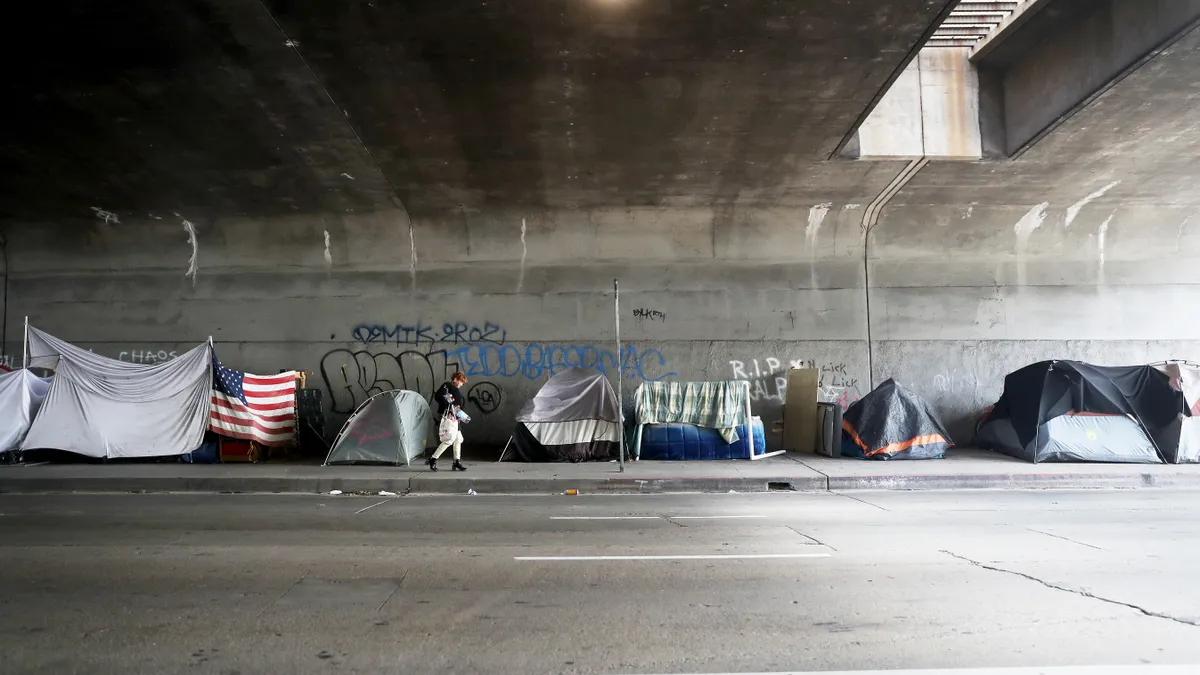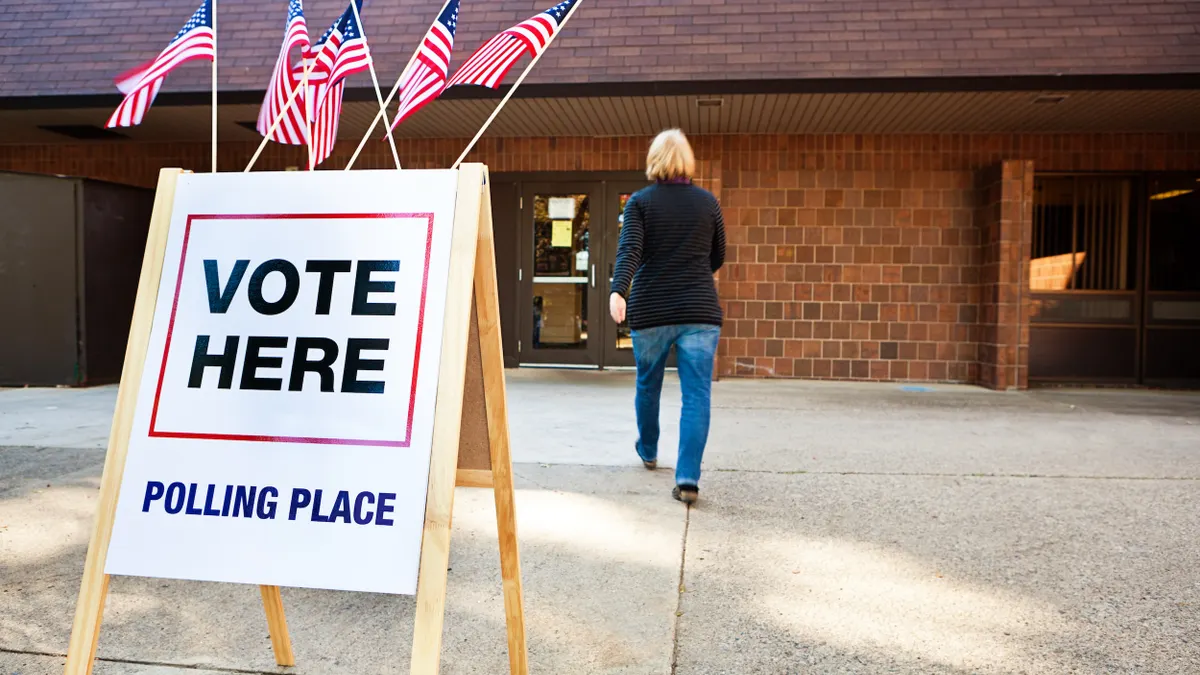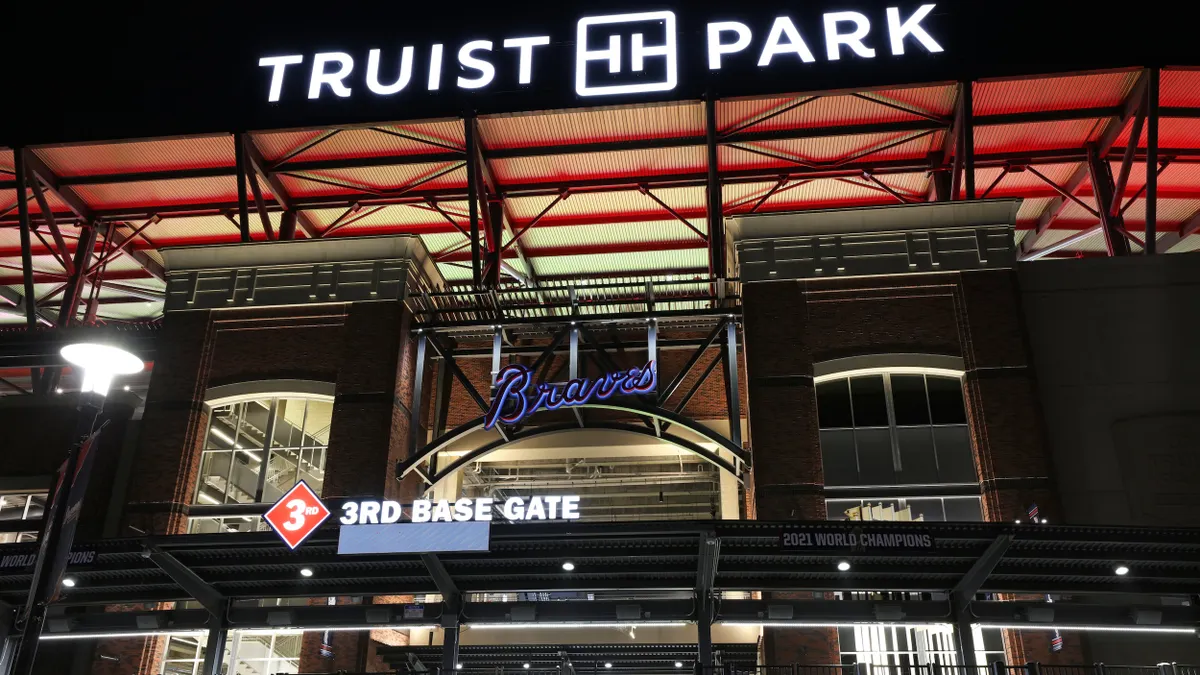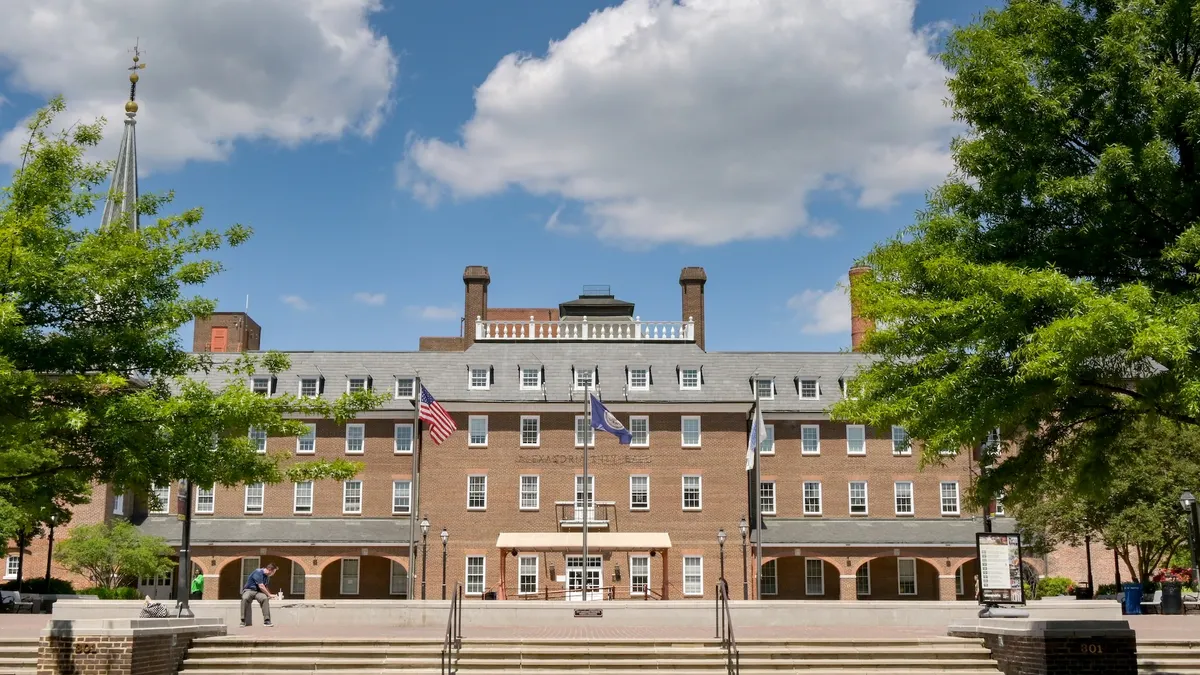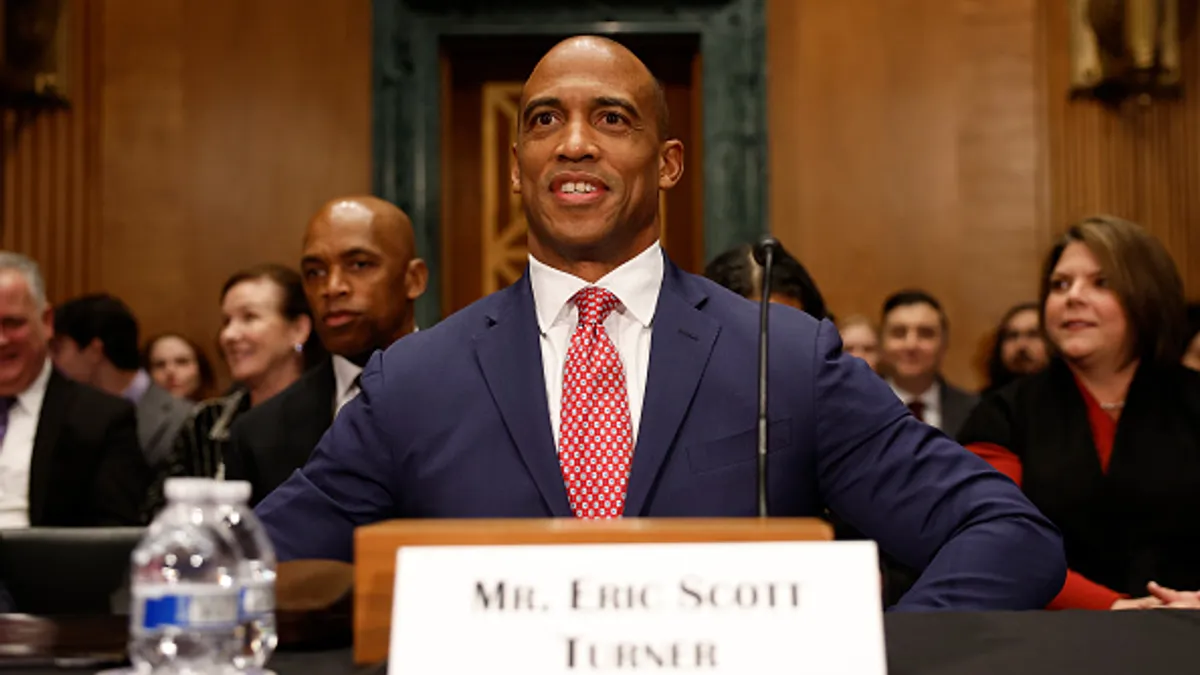The city of Los Angeles reached a settlement agreement this month to potentially build thousands of homeless shelter beds capable of accommodating 60% of the city's unsheltered population over the next five years.
Homelessness experts and civil rights advocates say the undertaking, which could cost the city as much as $3 billion, is significant but it is still unclear how much of an effect it would have on the tens of thousands of individuals who are homeless without shelter. The agreement still needs to be approved by the city council and the U.S. District Court judge overseeing the case.
"Creating shelters could help many people get off the streets. But it will depend on whether these shelters are well designed and well run," said Benjamin Henwood, director of the University of Southern California's Center for Homelessness, Housing and Health Equity Research, in an email.
Settlement agreements of this type are not unprecedented. In 2019, many cities in nearby Orange County, California, including Anaheim, Laguna Beach and Fullerton, reached settlement agreements with the Orange County Catholic Worker to build shelter beds to accommodate their own populations that lack shelter. In Northern California, the city of Chico began converting a former BMX track into a shelter as the city entered a settlement agreement. And in 2020, New York City agreed to provide shelter for 16 and 17-year-olds, settling a lawsuit with the Legal Aid Society.
The number of beds that Los Angeles would be required to build in its agreement with the LA Alliance for Human Rights depends on the forthcoming results of the city's point-in-time count that was conducted in January, an annual tally of all sheltered and unsheltered individuals who are homeless. The city tallied more than 41,000 people without homes during its last count in 2020. The beds would be available for people with low acuity — those who do not require high levels of health and daily-living care.
The shortcomings of 'shelter-first' strategies
However, shelters don't end homelessness, said Henwood — it just gives a person a temporary place to stay as opposed to living outside, in vehicles or in other places that are not meant to be inhabited. If the city were to create the new shelters using funding that would have otherwise been spent to develop permanent housing: "These shelters that are meant to be temporary and a bridge to ending homelessness will turn out simply perpetuating homelessness," he said.
As unsheltered populations have spiked over the past several years, West Coast cities have implemented anti-camping bans, preventing people from living in tents along sidewalks or in public spaces. However, a federal appeals court ruling barred Western U.S. cities within the 9th U.S. Circuit Court of Appeals' jurisdiction from enacting such restrictions if they don't have enough beds at shelters to accommodate the number of people in their community experiencing homelessness.
Many West Coast cities have been moving toward a shelter-first strategy in lieu of a housing-first strategy with the understanding that if they create a certain number of shelter spots within their jurisdiction, they can enforce their anti-camping laws and push people into those shelters, said Eve Garrow, homelessness policy analyst and advocate with the American Civil Liberties Union of Southern California.
The Los Angeles City Council passed an ordinance last year banning encampments around public facilities such as parks and libraries. Garrow fears the settlement could push the city toward that shelter-first policy.
"Shelter is not housing," and such spaces are often "unsanitary and have fairly abusive conditions that people endure, especially in mass shelters," she said.
Los Angeles City Council President Nury Martinez stated during an April 1 press conference that prior separate plans by the city to build 13,000 beds are already underway, the Associated Press reported.
"How this settlement would amount to a major increase in beds is not immediately clear," said Jason Ward, associate director of the RAND Center on Housing and Homelessness in LA, in an email. The Rand Center is part of the Santa Monica, California-based think tank, the Rand Corporation. "The settlement states explicitly that the results of the 2022 homeless count will clarify the extent of this commitment."
"As long as a significant portion of Angelenos are rent-burdened or severely rent-burdened, people will fall into homelessness."

Jason Ward
Associate director of the RAND Center on Housing and Homelessness in LA
Under the settlement, the city needs to address the shelter needs of residents in each council district, meaning areas such as Skid Row could have a "potentially huge burden to meet," said Ward.
If the city were to dramatically expand its shelter system without plans to similarly expand the number of permanent subsidized affordable housing opportunities that people need to escape houselessness, Garrow said, many people "are just going to be waylaid in these extensively temporary arrangements, for years."
There are far more people nationwide who qualify for Section 8 vouchers — a form of federal rental assistance — than are available. In Los Angeles, roughly 10% of the city's residents who qualify have gotten one. Meanwhile, the cost of renting an apartment in many Southern California areas is becoming increasingly out of reach for many low-income and even middle-income earners.
The mayor's office did not respond to repeated requests for comment on the settlement agreement and its plans to address the city's unsheltered homelessness crisis.
The Los Angeles Times reported that the lawsuit was filed in March 2020 by a group of mostly downtown residents against the city and Los Angeles County for failing to protect public health and safety and not providing enough shelter space to accommodate people who are unsheltered. The county was not part of the settlement agreement.
It is unclear what percentage of the city's unsheltered population is considered part of that "low acuity" category and would be served by the beds, said Ward.
People with significant mental and physical health or substance use problems are excluded from the settlement since the county, not the city, is responsible for providing services for that population, said Ward.
But the agreement could be especially impactful for people who do not require high levels of care and entered into street homelessness after failing to secure financial assistance through programs such as Rapid Re-Housing, Ward said. Scarce housing resources often go to unhoused individuals with the most urgent care needs, he said.
"These unhoused people who fall through the cracks of these two ends of the support system may be helped by this settlement," he said.
The city needs to complete a survey of unsheltered people about their needs and preferences, work that the Rand Center is advancing, said Ward. But to end the homelessness crisis in LA, he said, the city needs to focus on increasing the availability of new, affordable housing.
"As long as a significant portion of Angelenos are rent-burdened or severely rent-burdened, people will fall into homelessness," said Ward. "And the longer they remain that way, the larger will be the challenge of successfully reintegrating these individuals into housing."



